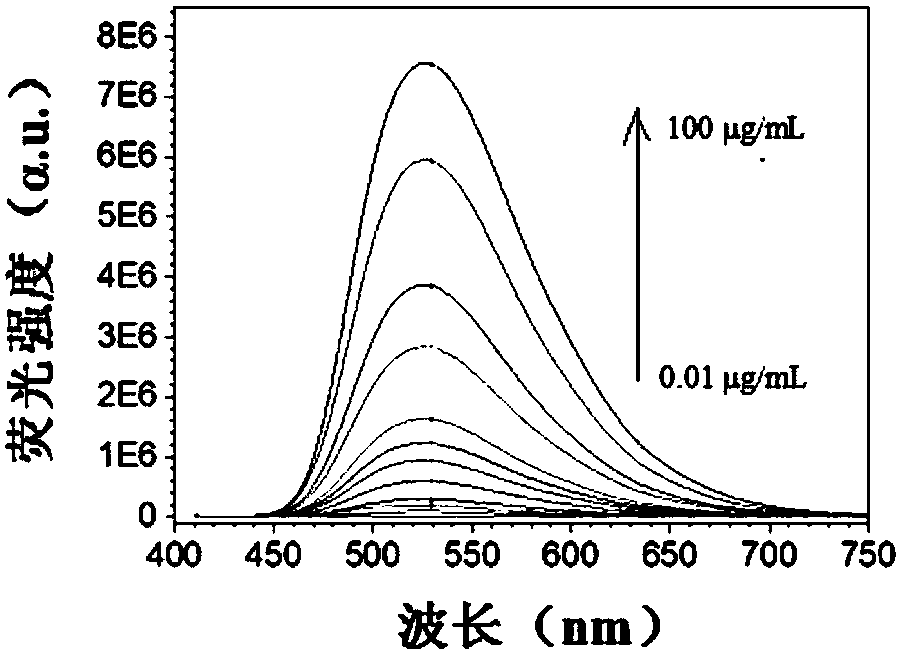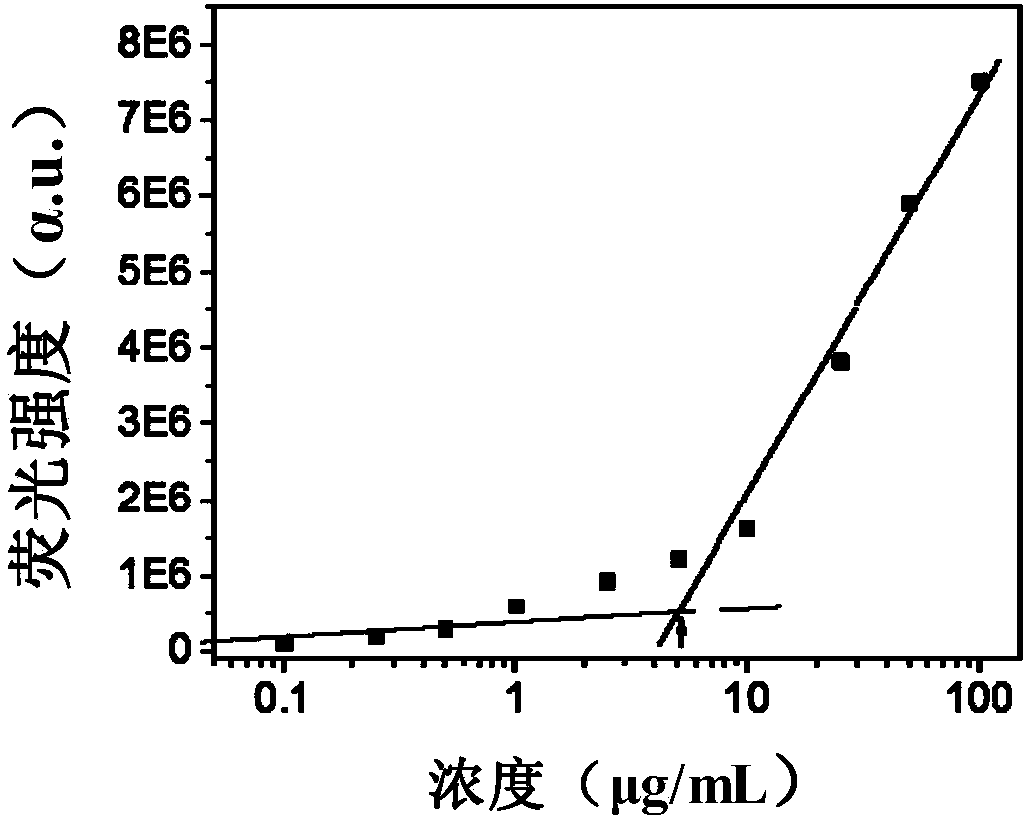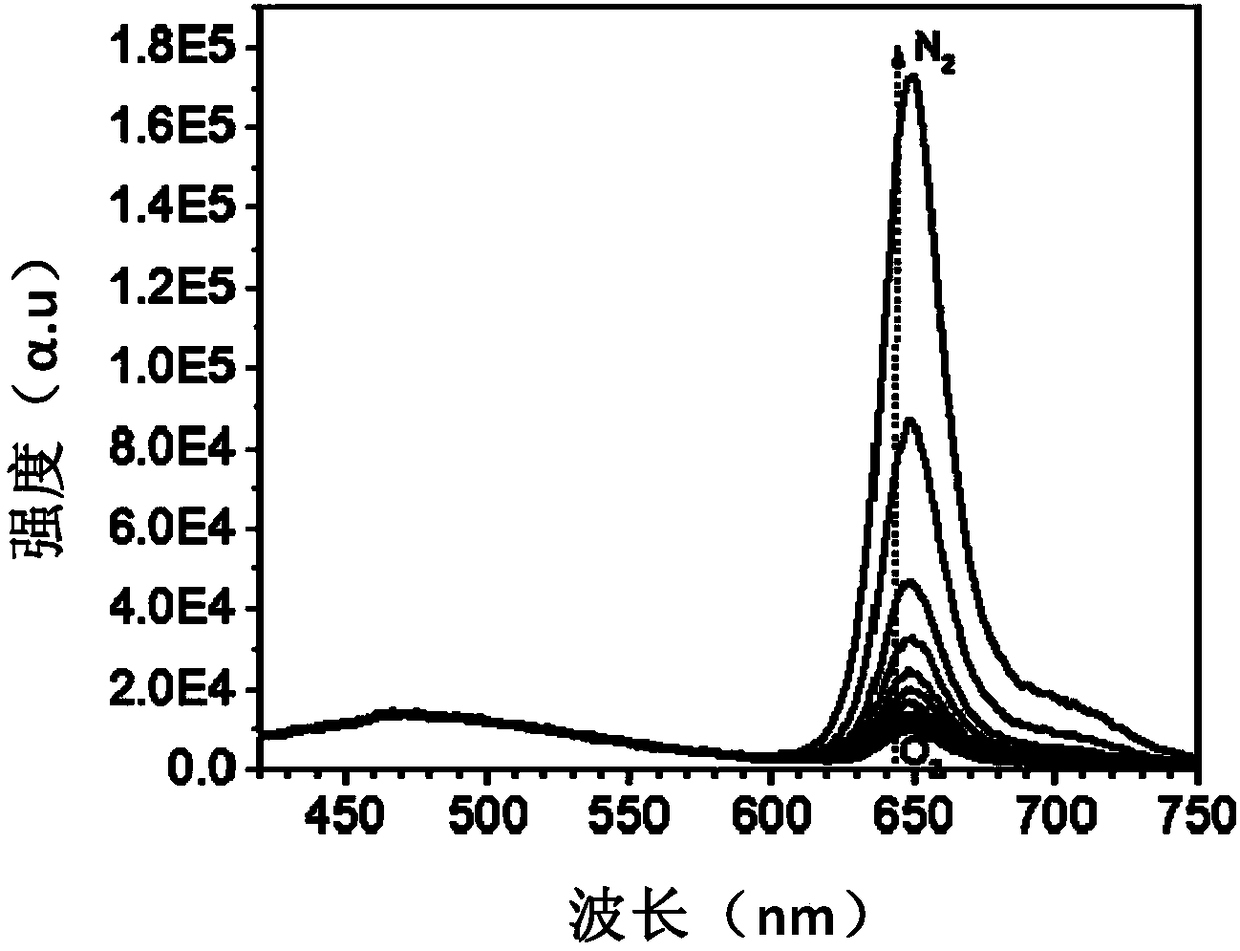A kind of extracellular ratio type oxygen sensing probe and its preparation method and application
An oxygen sensing probe, ratiometric technology, applied in the field of extracellular ratiometric oxygen sensing probe and its preparation, can solve problems such as low quantum efficiency
- Summary
- Abstract
- Description
- Claims
- Application Information
AI Technical Summary
Problems solved by technology
Method used
Image
Examples
Embodiment 1
[0130] In this example, the polymer carrier shown in formula a was synthesized through the following process:
[0131]
[0132] where A is
[0133] The synthesis steps are as follows:
[0134] P1 synthesis process:
[0135] 988mg (8.7mmol) ε-caprolactone and 61.1mg (0.1mmol) aggregation-induced luminescent molecule A-OH (synthesized according to the following literature: Hongguang Lu, et al, JOURNAL OF POLYMER SCIENCE PART A: POLYMERCHEMISTRY 2012,50,890– 899) was fully mixed in the flask, and stirred in an oil bath at 110°C under a nitrogen atmosphere for 5 minutes, and then injected two drops of catalyst stannous octoate (Sn(Oct) 2 ), after stirring and reacting overnight, the reactant was rapidly cooled in an ice bath to obtain a solid polymer. Afterwards, the solid polymer was redissolved in 5 mL of dichloromethane, and then the solution was slowly added dropwise to 100 mL of ice methanol to obtain a polymer precipitation, and the precipitation process was repeated...
Embodiment 2
[0141] In this example, the polymer carrier in formula d is prepared by the following reaction
[0142]
[0143] 73mg (0.06mmol) P2, 440mg (0.8mmol) oligoethylene glycol methyl ether methacrylate (OEGMA, molecular weight 550), 10mg AIBN were placed in a 10mL Schlenk tube, and filled with nitrogen after using the traditional deoxygenation method The gas was exchanged three times, heated to 70°C and stirred, and reacted for 24 hours. After the reaction was completed, it was added dropwise into glacial ether to obtain viscous polymer P4. Yield 84%. Mn=35400, Mw=43200. x:y=7.5:72.5.
Embodiment 3
[0145] The ability of the polymer carrier prepared in Example 1 to form micelles in an aqueous solution is investigated by measuring its critical micelle concentration. During the formation of micelles, the fluorescence emission will be quenched by water to obtain a weaker micelle concentration. fluorescence. Once micelles are formed, the fluorescence intensity will be greatly enhanced. The CMC of the polymer carrier prepared in Example 1 was judged by measuring the change of the fluorescence intensity of P3 at a concentration of 0.01 μg / mL to 100 μg / mL in an aqueous solution, and judging the sudden change point of the fluorescence intensity. During the test process, the fluorescence intensity changes with the concentration as figure 1 As shown, the visible nanosystem has a strong absorption at a wavelength of 530 nanometers, and the fluorescence intensity increases with the increase of the polymer concentration. The concentration and the fluorescence intensity value at 530n...
PUM
 Login to View More
Login to View More Abstract
Description
Claims
Application Information
 Login to View More
Login to View More - R&D
- Intellectual Property
- Life Sciences
- Materials
- Tech Scout
- Unparalleled Data Quality
- Higher Quality Content
- 60% Fewer Hallucinations
Browse by: Latest US Patents, China's latest patents, Technical Efficacy Thesaurus, Application Domain, Technology Topic, Popular Technical Reports.
© 2025 PatSnap. All rights reserved.Legal|Privacy policy|Modern Slavery Act Transparency Statement|Sitemap|About US| Contact US: help@patsnap.com



